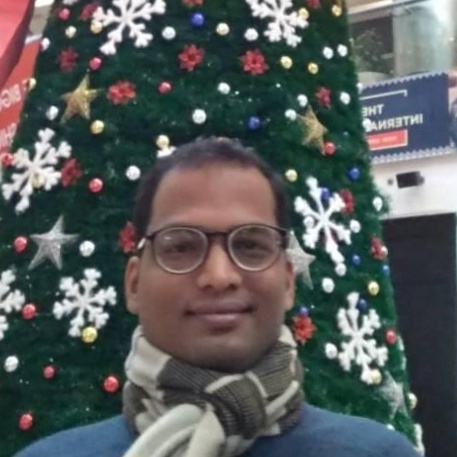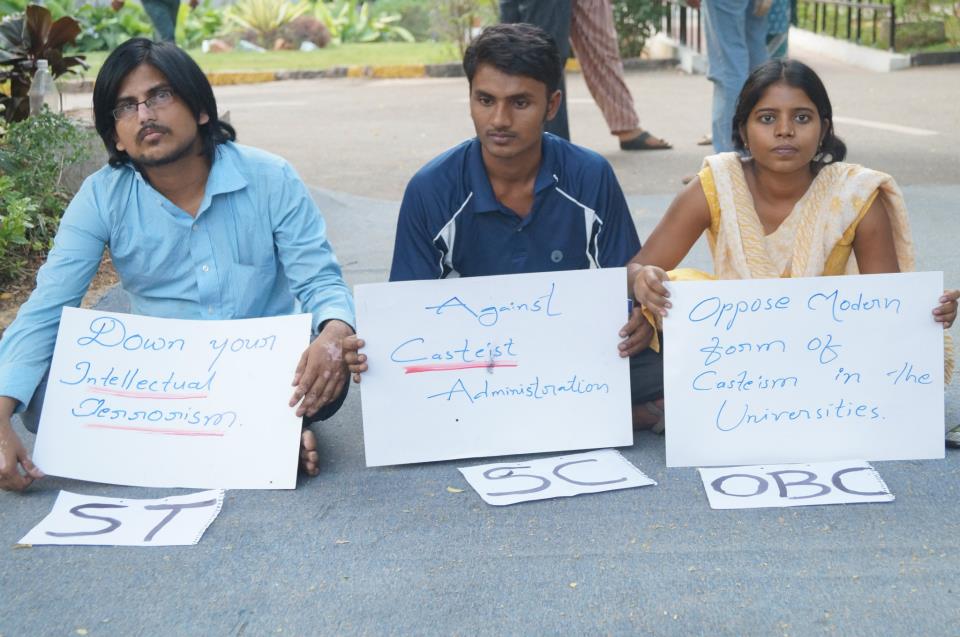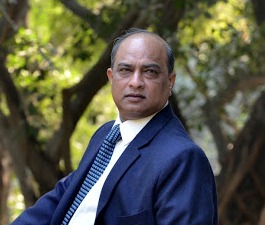Rajanikanta Gochhayat
 Is the latest quota move by the NDA government led by BJP an issue of group representation of the upper castes or an electoral strategy before the 2019 general election? It is both the ‘politics of presence’ and ‘electoral strategies’, bringing some inputs to the reservation debate too. The ‘politics of presence’ talks about the identity of the representatives and community interests. It’s a well-known fact that Indian politics is influenced and dominated by upper caste leadership. There is much debate on whether the leadership of the marginalised groups has been effective in terms of protecting the communities’ interests or not. However, there is hardly any debate on how the upper caste leaders represent their community interests.
Is the latest quota move by the NDA government led by BJP an issue of group representation of the upper castes or an electoral strategy before the 2019 general election? It is both the ‘politics of presence’ and ‘electoral strategies’, bringing some inputs to the reservation debate too. The ‘politics of presence’ talks about the identity of the representatives and community interests. It’s a well-known fact that Indian politics is influenced and dominated by upper caste leadership. There is much debate on whether the leadership of the marginalised groups has been effective in terms of protecting the communities’ interests or not. However, there is hardly any debate on how the upper caste leaders represent their community interests.
In ‘politics of ideas’, it does not matter who the representatives. What matters here is what is being represented and which issues are debated. However, this hardly takes specific community interests into consideration. Thus, political scientists advocate for the group specific representation in favour of minority communities in the political sphere, since their presence may have positive influence on the policymaking process and community interests can be protected effectively. So the identity of the representatives’ matters in a multicultural society as every community has distinct social and cultural interests. Apart from the distinct culture, the representatives share the same socio-cultural life with the community, so the community interests can be effectively voiced by the group representatives in the policy-making process.
In this context, it can be observed that there is over-representation of the upper caste leadership in the cabinet under the current NDA government (2014-18) as well as older cabinets under different political conditions. And the present cabinet has taken such group representation efforts to the next level with the move of 10% quota for the poor upper castes, as they did with the introduction of new roster policy for faculty recruitments in the universities. Under the new roster policy, each department is supposed to be taken as a unit for recruitment which sabotages effective reservation for SC/ST/OBC candidates.
In another perspective, it can be analyzed as the electoral strategy of the BJP. Upper castes have always been the ‘core vote bank’ for the party. Through its different moves, the party claims to be the true representatives of the upper castes and tries to prove the Congress as anti-hindu and anti-upper caste. Congress has hardly ever been anti-hindu or anti-upper caste and they even proposed 10% quota in 1991 for such sections. It also banned cow slaughter in about 24 states way back in 1955 when BJP was not even formed. But after Congress party recently changed its campaigning strategy recently to show an even more pro upper caste face, including steps like Rahul Gandhi’s visits to temples, his wearing a janeu and identifying with a gotra. In the case of dilution of the SC/ST POA Act, BJP didn’t defend the the important provisions of the act in the Supreme Court. This aided the court’s decision to dilute the act. After spontaneous revolt by the SC/ST community against this dilution the government had to quickly restore the removed provisions. This spread a wrong image of the party among the upper castes. After the defeat in the recent Assembly elections in the cow belt states, BJP is trying to appease the upper castes through this latest move. What is more astonishing incident was that BJP, which was struggling due to the lack of majority in the Rajya Sabha over the last 4 years, passed the bill with unanimous support from all the opposition parties including Congress and Left. Like the Congress, the Left parties have also shown historical support to such a move and have even tried to implement such reservation policy in Kerala recently.
Emerging issues in the new quota move
There are some emerging issues around this new reservation debate in the form of social, economic, political and legal dimensions. There are two amendments under the article 15 and 16 in the 124th Amendment Bill. The bill provides reservation to the economically weaker sections. However, the parameters taken into consideration seem to be ironic: those households having 5 acres land or less, or 1000 sq. feet residential property or 8 lakh per annum income are eligible for the reservation. On the other hand, it prompts the pro-poor thinkers to rake up the issues of landlessness among the SC/ST/OBC in this context.
The article 16(4) says that the community which is found inadequately represented in the services under the state can be given reservation. Can it be used to support the upper caste reservation? As far as representation of the upper castes in public institution sis concerned, they are highly over represented. According to recent data, Scheduled Castes, Scheduled Tribes and OBC are under-represented in the higher echelons of the government services in the Group A and Group B, and most of its institutions, including central universities. The figures seem to be surprising in the faculty positions held by different social groups in the 40 central universities. Here the reservation for OBCs is only applicable at the level of Assistant Professor. But even at that level, their share is only 14.38%. The OBC representation is zero at the Professor and Associate Professor level positions in these central universities. The data shows that 95% of Professors, 92.9% Of Associate Professors and 66.27% of Assistant Professors are from the general category. The representation of general category is 68.82% in the railway sector, 62.95 in 71 departments, 66.17% in HRD Ministry, 80.25% in cabinet secretariat, 73.84% in Niti Aayog, 74.62% in president’s secretariat, 76.92% in vice-presidents secretariat, 64.76% in UPSC and 66.79% in CAG. OBCs are severely under-represented in those ‘Group A’ and ‘Group B’ positions from the railway sector to the CAG. Therefore, it is essential to think about why there is a need to give reservation to the over-represented group.
Reservation is not a poverty alleviation programme. However, the question arises now as to who needs group specific policies. If a community facing discrimination on the basis of group identity, there is a need for group specific policy. Under the pro-poor policy there is no equal access to the discriminated groups such as Dalits as they still face discrimination in differnt such schemes like Public Distribution System (PDS). Another question that this policy raises is whether the upper caste poor, having 5 acres land or annual income of 8 lakh can get out of the poverty without government intervention. The answer would be in in the affirmative, since they enjoy a favourable environment for their participation in socio-economic activities under the hierarchical caste system, not being subject to norms of purity, pollution, social ostracism and discrimination which are also the causes of poverty among Scheduled Castes.
There is hardly any evidence of the upper castes being discriminated against on the basis of group identity in land market, labour market, capital market or in buying and selling products. On the other hand, Dalits face discrimination in carrying out various economic activities. Is there any discrimination against the upper castes in the private sector job markets? Contrary to that, they are given preference over the the oppresssed communities in recruitment. Members from Scheduled Castes, Scheduled Tribes and Religious Minorities face discrimination in the private sector job market simply due to their identity. Thus, reservation for the Upper Castes is not about a solution to alleviate poverty but to further their representation in various spheres. If there is any unemployment among the upper caste, it is voluntary unemployment. This is happening because, they hesitate to take up the occupations not assigned to their castes under the division of labour. To alleviate poverty, they need to annihilate caste. Lastly, reservation is a safeguard to counter identity based discrimination and ensure representation of the marginalised groups, not to alleviate poverty.
~
References
* Philips, Anne (1998). Politics of Presence, OUP
* Thorat Sukhadeo et.al (2009). Urban Labour Market Discrimination, Working paper, Volume 111, Number 01,IIDS.
* Thorat, Sukhdeo and lee Joel (2006) Dalit and Right to food- Discrimination and Exclusion in food-related government programmes, Working Paper,Volume 1 Number 03, IIDS.
* Thorat, Sukhadeo and Sabharwal,N S(2010) Caste and Social Exclusion: Issues Related to Concept, Indicators and Measurement, Working Paper,Volume 2,Number 01, IIDS-UNICEF.
* Orissa govt brings down SEBC quota limit to 11.25%. Indian Express, 25 June, 2014.
* Chishti, Seema; Hindu, not Hindutva. Indian Express, Dec 21, 2018.
* Reservation candidates are under-represented in Govt’s upper rungs, Indian Express, 16 Jan, 2019.
* Eyes on polls, cabinets approves 10% quota for economically weaker general category, Indian Express, 13 Jan, 2019.
* Kerala chief minister Pinarayi Vijayan welcomes moves for economic reservation, The Times of India, 8 Jan, 2019.
* Congress was the first in banning cow slaughter, will consider backing central laws on ban: Digvijay Singh, The Economics Times 6 Oct 2015.
~~~
Rajanikanta Gochhayat is a Ph.D Scholar at Indian Institute of Dalit Studies, New Delhi. He is interested in Political Representation, Political Inequality, Social Exclusion and Economics of Discrimination.










